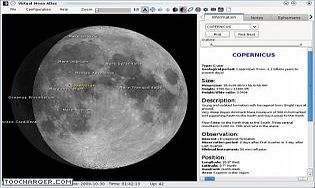

Preceded by the military issue released the same year. 'His work laid the foundation for the spacecraft missions of the late 20th and early 21st centuries'" (NASA). Richard Binzel, New Horizons co-investigator and professor at the Massachusetts Institute of Technology (MIT). "'Kuiper was one of the first scientists to focus almost exclusively on exploring the properties of planets,' said Dr. Without these efforts, the Jlanding of Apollo 11 on the moon could not have occurred.

Eventually his team would produce three lunar atlases (a second supplement was published three years later focusing on the limb regions of the Moon). In 1960 Kuiper founded the University of Arizona Lunar and Planetary Laboratory, where he orchestrated the production of a new, more complete photographic lunar atlas. He was the dissertation advisor for Carl Sagan, and the namesake of the Kuiper Belt of asteroids past Neptune. The author, Gerard Kuiper, a professor for many years at the University of Chicago, is widely regarded as the father of modern planetary science. These photographs of the central portion of the lunar disk exclude the limb zones. The Orthographic Atlas consists of the best photographs for each of the 44 fields in the earlier atlas overprinted with the rectangular xi-eta grid (adjusted to the correct librations for the photograph) at a spacing of 0.01 lunar radius, with colored lines of latitude and longitude at intervals of 2 degrees. Divided into three parts, the Atlas includes an introduction showing a subdivision of the Lunar surface into 44 fields and giving the names of the maria, mountain ranges and craters based on the system of Blagg and Muller the main body of the Atlas, composed of four sheets per field (176 sheets), to which are added two additional sheets each for the four polar areas (184 sheets total) and 35 supplementary sheets. They are reproduced lithographically, on large atlas folio sheets. The atlas contains photographs taken at the observatories at Mount Wilson, Lick, McDonald, Yerkes and Pic Du Midi. These photographs proved to be invaluable for the planning and operational sites of later spacecraft missions to the moon. The purpose of the Lunar Atlas was to provide the United States government with the most complete and best photographic coverage of the moon. Oblong atlas folio (each approximately 18-1/2 by 22-1/2 inches), original red cloth, Orthographic Atlas post-bound.įirst edition, civilian issue, of the Photographic Lunar Atlas (preceded by the printing for US Armed Forces), with 281 photographs on 230 sheets (the sheets measuring 18-1/2 by 22-1/2 inches), together with the first edition of the Orthographic Atlas, with 31 atlas folio plates.

Chicago / Tuscon: University of Chicago Press / University of Arizona Press, 1960. Supplement Number One to the Photographic Lunar Atlas. 1960 PHOTOGRAPHIC LUNAR ATLAS, WITH 281 ATLAS FOLIO IMAGES OF THE MOON'S SURFACE, TOGETHER WITH THE SUPPLEMENT OF 31 ADDITIONAL PLATES


 0 kommentar(er)
0 kommentar(er)
